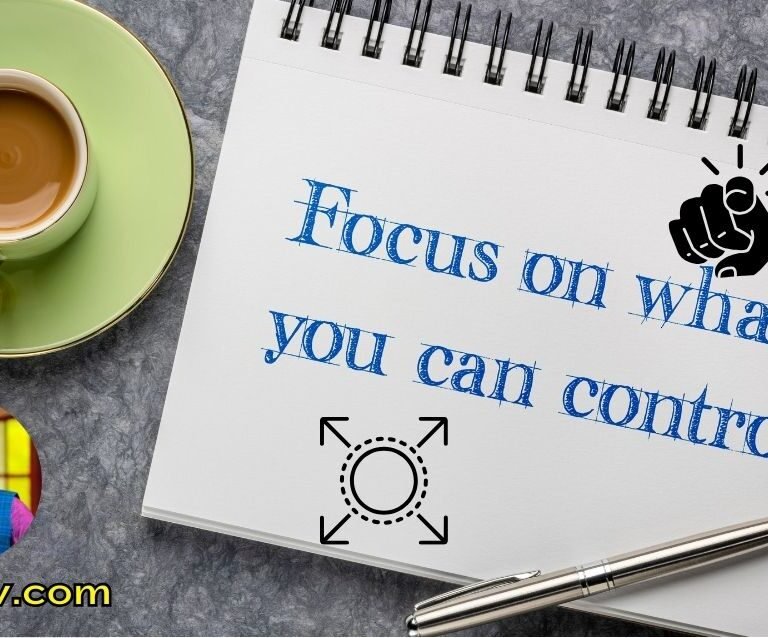Inner Obstacles
Inner obstacles refer to the psychological and emotional barriers that individuals face within themselves as they pursue personal growth and fulfillment. Unlike external challenges, which may arise from outside circumstances such as societal pressures, financial constraints, or interpersonal conflicts, inner obstacles are rooted in one’s own mindset, beliefs, and perceptions. These barriers might manifest as self-doubt, fear of failure, negative self-talk, or limiting beliefs that impede progress. Understanding how these inner struggles differ from external challenges is crucial, as it allows individuals to focus on the underlying issues that hinder their advancement.
Ralph Marston, a renowned author and motivational speaker, has shed light on these inner challenges through his insights and quotes. His perspective encourages individuals to look inward and identify the mental hurdles that prevent them from reaching their full potential. By emphasizing the internal nature of these obstacles, Marston highlights the importance of self-reflection and conscious awareness in overcoming them. The realization that many of our limitations are self-imposed can be a turning point in one’s journey of personal development.
Inner obstacles can be particularly insidious, as they often operate beneath the surface of conscious awareness. This makes recognizing and addressing them a significant aspect of the personal growth journey. For instance, an individual may desire to pursue a new career or take on a challenging project but might feel paralyzed by the fear of judgment or inadequacy. In such scenarios, the root of the problem lies not in the external environment, but in the fears and doubts that dwell within. Thus, addressing these inner obstacles is essential for fostering resilience and achieving lasting change.
Understanding Ralph Marston’s Quote
Ralph Marston, an influential motivational author, often emphasizes the profound impact of our internal dialogues on our lives. His quote reflects a critical understanding that frequently, we are our own worst enemies. This assertion invites us to examine the ways in which self-doubt, fear, and limiting beliefs can manipulate our actions and perceptions. At the core of this statement lies the idea that the greatest obstacles we face are not external, but rather stem from within ourselves.
Self-perception plays a crucial role in shaping our experiences and responses to challenges. When individuals harbor negative beliefs about their abilities, they often unconsciously set themselves up for failure. This internal barrier can manifest as procrastination, avoidance of opportunities, or a lack of perseverance in the face of adversity. By acknowledging that we can be our own impediments, we gain an essential insight into the psychological mechanisms that undermine our potential.
Furthermore, recognizing these internal obstacles is the first step toward overcoming them. Understanding the source of our self-imposed limitations allows for a transformative process where we can realign our thoughts with our true capabilities. By cultivating a positive mindset and actively challenging negative beliefs, we empower ourselves to break free from the constraints we unintentionally impose. This journey of self-awareness and growth encourages individuals to embrace their strengths, redefining their self-identity in a manner that fosters resilience and confidence.
In examining Marston’s quote, it becomes clear that the journey toward overcoming internal obstacles is a vital aspect of personal development. By consciously acknowledging and addressing our self-sabotaging thoughts, we can create a more constructive narrative that propels us toward success.
Common Types of Inner Obstacles
Inner obstacles are psychological barriers that can significantly affect an individual’s potential for growth and achievement. Among the prevalent types of these barriers are fear, self-doubt, procrastination, and negative self-talk. Each of these obstacles manifests in various ways, ultimately hindering personal and professional advancement.
Fear is a common inner obstacle that can paralyze decision-making. It stems from a sense of uncertainty about outcomes, thereby leading individuals to avoid taking risks or pursuing new opportunities. This apprehension can prevent them from stepping outside their comfort zones, which is often essential for growth. Addressing fear requires an understanding of its root causes and developing coping strategies to confront and mitigate its impact.
Self-doubt is another significant inner obstacle that undermines confidence and inhibits action. Individuals plagued by self-doubt often question their abilities and worth, which can lead to missed opportunities and stagnation in personal development. To counter self-doubt, it is crucial to cultivate a positive self-image and seek external feedback that reinforces one’s competencies.
Procrastination is an inner obstacle characterized by the tendency to delay important tasks. This behavior can be driven by several factors, including fear of failure, perfectionism, or even lack of motivation. Procrastination not only impedes progress but can also lead to increased stress as deadlines loom. Establishing a structured schedule and breaking tasks into manageable steps can help combat this issue.
Lastly, negative self-talk serves as a pervasive inner obstacle that can distort reality and diminish self-esteem. It encompasses the internal dialogues that are critical or dismissive of one’s capabilities. By practicing mindfulness and challenging these negative thoughts, individuals can foster a more positive mental environment conducive to growth.
The Impact of Inner Obstacles on Life and Success
Inner obstacles, often stemming from self-doubt, fear, and limiting beliefs, can significantly hinder personal and professional growth. These barriers manifest in various facets of life, including career progression, relationships, and mental health. When individuals grapple with intense feelings of inadequacy or anxiety, they may find themselves paralyzed and unable to pursue opportunities that could lead to success. This phenomenon is not uncommon; studies indicate that nearly 70% of people experience imposter syndrome at some point in their careers, which reflects the pervasive nature of these internal struggles.
In the realm of career advancement, inner obstacles can deter individuals from taking risks or embracing new challenges. Employees may hesitate to apply for promotions due to fear of failure or the belief that they do not deserve success. As a result, talented individuals often remain stagnant in their roles, limiting both their professional growth and the potential contributions they could make to their organizations. This avoidance not only impacts individual trajectories but can ultimately detract from the collective progress within a workplace.
Moreover, inner obstacles also extend to personal relationships. Fear of rejection or abandonment can lead individuals to keep others at arm’s length, thus inhibiting the development of meaningful connections. When people engage in negative self-talk, they may communicate these doubts through their actions and interactions, fostering a cycle of isolation. Additionally, the toll of such inner conflicts can manifest in mental health issues like anxiety and depression, further compounding barriers to success in both personal and professional domains.
In summary, the impact of inner obstacles is pervasive, affecting various aspects of life. Recognizing these barriers is the first step toward overcoming them and ultimately leading a more fulfilling life filled with opportunities and genuine connections.
Strategies for Recognizing Inner Obstacles
Identifying personal inner obstacles is a crucial step towards self-improvement and personal growth. This process begins with self-reflection, which allows individuals to examine their thoughts, emotions, and behaviors more critically. Carving out regular time for introspection can lead to deeper insights into one’s mental barriers. Practicing mindfulness and meditation can aid this process, helping individuals to become more aware of negative thought patterns and emotional triggers that may be holding them back.
Journaling is another powerful tool to uncover inner obstacles. By recording daily thoughts and experiences, individuals can identify recurring themes or challenges that hinder their progress. Writing freely can also allow thoughts to flow without judgment, revealing hidden fears and doubts that may not be apparent at first glance. Over time, pattern recognition through journaling can illuminate specific inner obstacles that need addressing, whether they are related to confidence, procrastination, or fear of failure.
Additionally, seeking external feedback can provide a valuable perspective on one’s inner challenges. Friends, family members, or professional mentors can offer insights that individuals may overlook due to their biases. Constructive criticism can serve as a mirror, reflecting areas where inner obstacles might exist. It is essential to approach feedback with an open mind, maintaining a willingness to learn about oneself through the observations of others.
Lastly, setting aside time for self-assessment tools, such as personality tests or self-evaluation questionnaires, can guide individuals toward recognizing their inner obstacles. These tools can highlight areas of strength and weakness, serving as a baseline for personal growth. When approached with honesty and earnestness, these strategies can foster an enriched self-awareness, empowering individuals to address their inner challenges and move forward towards their personal and professional goals.
Practical Techniques to Overcome Inner Obstacles
Overcoming inner obstacles is a vital part of personal growth and development. Implementing effective techniques can empower individuals to combat these challenges, fostering a more positive mindset. One prominent strategy is the use of positive affirmations. Affirmations are constructive statements that help to challenge and control negative thoughts. By repeatedly affirming one’s abilities and attributes, individuals can reshape their inner dialogue, bolstering confidence and resilience. It is essential to formulate these affirmations in the present tense, focusing on desired outcomes to create a sense of immediacy and belief.
Another valuable technique involves setting achievable goals. Creating realistic and measurable objectives makes the daunting task of tackling inner obstacles more manageable. Breaking down larger goals into smaller, actionable steps is beneficial; this approach provides a clearer pathway and allows for incremental successes. Celebrating these minor victories reinforces a positive mindset and instills motivation, prompting individuals to continue their journey toward overcoming obstacles. Furthermore, utilizing the SMART criteria—Specific, Measurable, Achievable, Relevant, Time-bound—can enhance goal-setting effectiveness.
In addition to affirmations and goal setting, developing a consistent routine plays a crucial role in overcoming inner challenges. A structured daily schedule can facilitate focus and reduce distractions, allowing for dedicated time to confront and process obstacles. Incorporating activities that promote mental well-being, such as meditation, exercise, or journaling, can significantly enhance emotional resilience. These practices not only provide clarity but also support individuals in maintaining a centered and balanced perspective.
Collectively, these techniques serve as powerful tools in the quest to overcome inner obstacles. By integrating positive affirmations, goal-setting, and routine development into daily life, individuals can cultivate a proactive mindset. The journey to overcome inner barriers is both a personal and transformative experience, illuminating the path toward self-empowerment and fulfillment.
The Role of Mindfulness in Overcoming Challenges
Mindfulness is a powerful technique that can significantly enhance an individual’s ability to navigate through life’s challenges. By fostering a heightened awareness of one’s thoughts and emotions, mindfulness allows people to recognize the inner obstacles that may impede their progress. This practice emphasizes the importance of being present in the moment, facilitating a deeper understanding of personal reactions to stress and adversity.
Utilizing mindfulness involves various techniques, including meditation, deep breathing exercises, and mindful observation. These methods serve the purpose of quieting the mind and focusing one’s attention on the here and now, which in turn helps individuals identify and understand their emotional responses. When practitioners become aware of their thought patterns, they can begin to separate themselves from limiting beliefs and unproductive emotional states, enabling them to challenge their inner adversities.
Research indicates that regular mindfulness practice can lead to significant improvements in mental health and emotional regulation. By engaging in mindfulness meditation, individuals often experience a reduction in anxiety and stress levels, which are frequently the root causes of inner challenges. Additionally, techniques such as mindful journaling promote self-reflection, providing a structured way to confront and analyze personal obstacles.
Furthermore, mindfulness encourages individuals to adopt a non-judgmental attitude toward their thoughts and feelings. This acceptance is crucial as it diminishes the power of negative self-talk and destructive thought patterns that can hinder progress. By recognizing thoughts as transient rather than absolute truths, individuals are better equipped to overcome self-imposed limitations.
In essence, incorporating mindfulness into daily routines equips individuals with the tools needed to confront and transcend their inner obstacles effectively. Through awareness and acceptance, the practice fosters resilience, making it a vital component for those seeking to overcome personal challenges.
Real-Life Success Stories
The journey to overcoming inner obstacles is often fraught with challenges, but many individuals have emerged victorious, showcasing resilience and determination. One such inspiring story is that of Michael, a young entrepreneur who battled self-doubt and anxiety in his pursuit of launching a tech startup. Despite being highly skilled in his field, Michael found himself paralyzed by fears of failure and external judgment. However, by embracing vulnerability and seeking mentorship, he gradually dismantled these mental barriers. His willingness to share his struggles not only fostered a supportive network but also empowered him to pivot his business model, ultimately leading to a successful launch and increased confidence.
Another remarkable example is Maria, a single mother who faced the daunting task of returning to school while raising her children. Initially overwhelmed by feelings of inadequacy—stemming from years away from academia—she steeled herself against the inner critic that threatened to derail her ambitions. By establishing a structured routine and utilizing time management techniques, Maria transformed her moments of self-doubt into productive study sessions. Her perseverance culminated in earning a degree that not only altered her professional trajectory but also set a powerful example for her children regarding the importance of education and persistence.
These accounts affirm that confronting inner obstacles is a universal experience, and the path to success often lies in embracing challenges head-on. It is crucial to recognize that such transformations do not happen in isolation; they often require community support, mentorship, and a willingness to acknowledge one’s fears. These narratives serve as powerful reminders that while obstacles may arise from within, overcoming them is possible through dedication and the right mindset. Each individual’s journey offers valuable insights that can encourage others who may find themselves struggling on their paths to personal growth.
The Journey of Self-Improvement
Throughout this exploration of inner obstacles, we have examined how self-doubt, fear, and limiting beliefs can significantly impede personal growth. Ralph Marston’s insights remind us that the most formidable challenges we face are often those we create in our minds. Acknowledging this aspect of our struggles is the first vital step toward transformation. The journey of self-improvement is not merely about overcoming these barriers; it is about understanding their origins and learning to navigate through them with resilience.
It is essential to recognize that obstacles are an inevitable part of life. They serve as opportunities for growth and self-discovery, urging us to address the internal dialogues that shape our experiences. By adopting a proactive approach, individuals can engage in practices such as positive affirmations, self-reflection, and goal-setting to counteract these inner barriers. As Marston eloquently illustrates, embracing the journey means not just striving for external success but also fostering inner peace and fulfillment.
Moreover, developing a habit of patience and self-compassion is crucial as one embarks on this transformative journey. Recognizing that progress may not always be linear allows individuals to embrace setbacks as learning experiences rather than definitive failures. This perspective encourages a healthier relationship with the self, promoting a sense of worth that transcends societal expectations and pressures.
In conclusion, while the journey of self-improvement may be fraught with challenges, it is ultimately a rewarding and enriching experience. By focusing on overcoming the internal obstacles we face, we can unlock our true potential and navigate life’s complexities with greater confidence. Embracing this journey is not just about striving for success; it is about fostering a genuine sense of self-awareness and resilience that will serve us well in all aspects of life.









